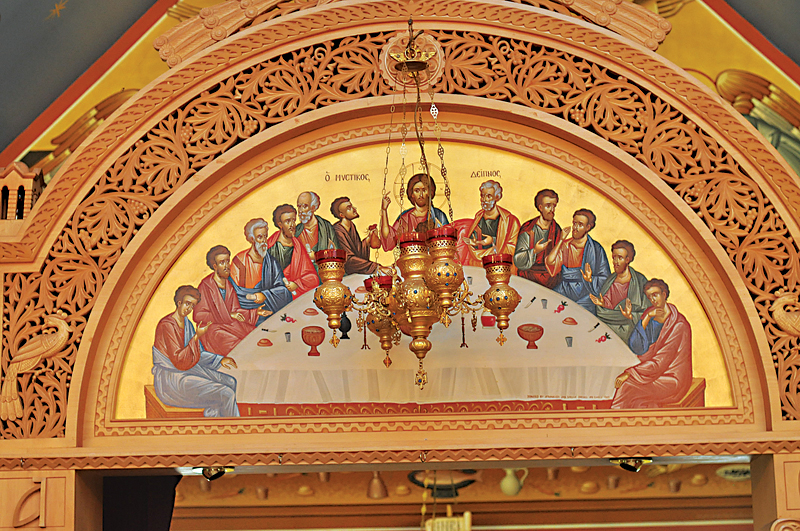Through it all, this Greek church in Mattituck endures

THE BIRTH OF A CHURCH
Catherine Tsounis, the daughter of founding church members, has been documenting history at Transfiguration of Christ for as long as it has existed.
A teacher and real estate broker by trade, she has a passion for telling the story of her house of worship. And she wants to get it right.
As she sits on a couch in Father Makrinos’ study, a bound volume rests on her lap. Inside is the story of how a church and an ethnic community were born.
Each page contains press clippings from The Suffolk Times, Newsday and the former Watchman newspapers. Many more of the archived articles were written for various Greek and religious publications by Ms. Tsounis herself — the church historian and a title she takes seriously.
“This is very important,” she said, her brows arching ever so slightly above her eyeglasses as she emphasizes her words. “The future generations of this church need to know how it all began and it needs to be accurate.”
The press clippings tell the story of the origins of the church, which dates back to 1968. That’s when the North Fork Greek Community Association was founded with the purpose of starting a Greek Orthodox Church within the Mattituck community.
Ms. Tsounis said that since the church property abuts Douglas Cooper Farms, many people believe it was once a part of that farm. But the land was actually a potato farm belonging to the late Stanley Sledjeski, a local farmer and real estate broker, who sold his property at below market value at the suggestion of his wife, Helen, a religious woman.
The church’s first president, Theofan Kyvernitis, a Cypriot immigrant and businessman, acquired the land and donated it for construction of the church. Architect Steve Tsontakis donated his services in designing the building. Many of the funds needed to build the church were raised through modest measures, such as weekly cake sales.
A groundbreaking was held on Breakwater Road in the fall of 1969 and liturgy was conducted at the nearby Church of the Redeemer in Mattituck until Transfiguration of Christ opened its doors in 1970.
It was the first Greek church built on the East End.
Transfiguration of Christ was founded by Cypriot immigrants like Mr. Kyvernitis, who had settled, mostly seasonally, in Mattituck during the 1960s.
In the 1950s and 1960s, during periods of political instability and economic recession, nearly 80,000 people left the island of Cyprus, many of them settling in New York City and Long Island.
“This church, like many Greek churches in America, was built by working class people,” Father Makrinos said. “These were not rich people and they built it from scratch.”
By the early 1980s, a “Greek colony” had sprung up in the surrounding area, said Ms. Tsounis, who estimated that approximately 60 Greek families still own homes within blocks of the church.
Church leaders gave several reasons why so many Greek families were attracted to the Mattituck area.
Ms. Tsounis said the North Shore beaches reminded church founders of the rocky terrain of Cyprus. Her husband, John Siolas, an associate professor at St. John’s University in Queens and a former Parish Council secretary, said the agricultural roots of the Mattituck community were also appealing to Greeks, many of whom planted their own gardens here.
Of course, Mr. Siolas said, the vast open spaces and the fact that land could be purchased for less on the North Fork than the south also made Mattituck a more desirable location.
Ms. Tsounis said many of the founding members of Mattituck’s Greek community purchased old bungalows along the water that they replaced with larger villas.
“They uplifted the neighborhood,” she said. “They really helped to raise real estate values here.”
Photo: An icon of the Last Supper rests above the altar at Transfiguration of Christ Church. The church’s icons, designed by George Filipakis, are in the Cretan style. ‘It’s brighter colors [than the Mediterranean style],’ said Father Constantine Makrinos. ‘It’s more approachable. Jesus is a sweet Jesus.’ (Credit: Grant Parpan)








